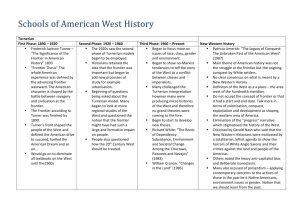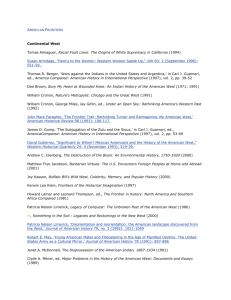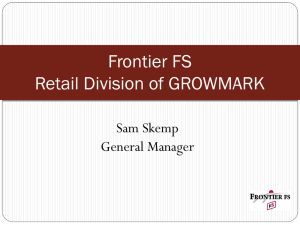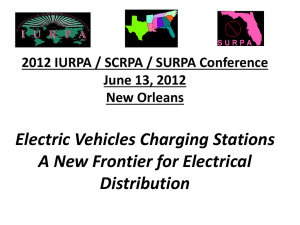Lecture 6
advertisement
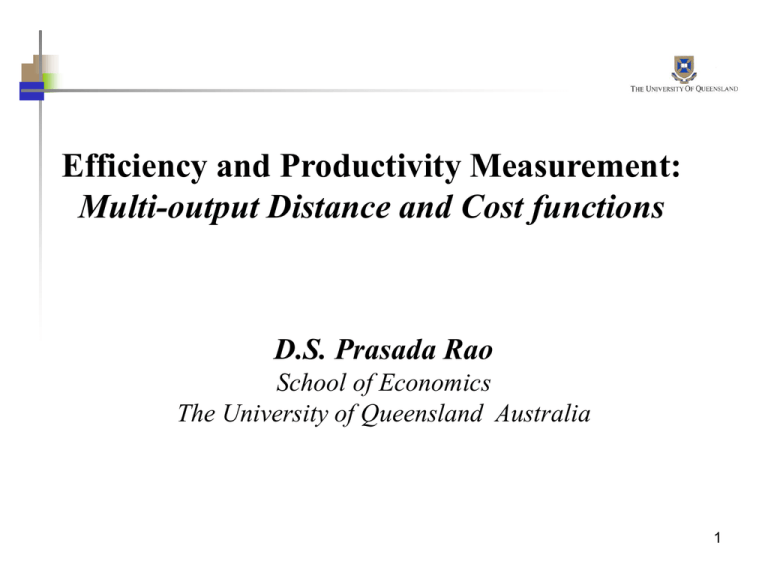
Efficiency and Productivity Measurement: Multi-output Distance and Cost functions D.S. Prasada Rao School of Economics The University of Queensland Australia 1 Duality and Cost Functions • So far we have been working with the production technology and production function – this is known as the primal approach. • Instead we could recover all the information on the production function by observing the cost, revenue or profit maximising behaviour of the firms. • This is known as the dual approach to the study of production technology. • In our lectures, we have looked at the possibility of describing the technology using input and output distance functions. • Here we will focus on cost functions – see the textbook for revenue and profit functions (Chapter 2). 2 Duality and Cost Functions • The cost function is defined as: c ( w , q ) m in x w x such that ( q , x ) S C.1 Nonnegativity: Costs can never be negative. C.2 Nondecreasing in w: An increase in input prices will not decrease costs. More formally, if w 0 w 1 then c ( w 0 , q ) c ( w 1 , q ). C.3 Nondecreasing in q: It costs more to produce more output. That is, if 0 1 0 1 q q then c ( w , q ) c ( w , q ). C.4 Homogeneity: Multiplying all input prices by an amount k> 0 will cause a kfold increase in costs (eg., doubling all input prices will double cost). Mathematically, c(kw, q) = kc(w, q) for k > 0. C.5 Concave in w: c ( w (1 ) w , q ) c ( w , q ) (1 ) c ( w , q ) for all 0 1. This statement is not very 0 1 0 1 intuitive. However, an important implication of the property is that input demand functions cannot slope upwards. 3 Duality and Cost Functions • When dealing with multi-output and mlti-input technologies, we can use the cost-function to derive the input demand functions. From Shepherd’s Lemma, we have: xn ( w , q ) c (w , q ) wn . • The input demand function satisfies all the expected properties: (i) non-negativity; (ii) non-increasing in w; (iii)non-decreasing in q; (iv) homogeneous of degree zero in input prices; and (v) Symmetry • Estimation of cost function – either as a single equation or a system of equations including input-share equations. 4 Cost frontiers • Advantages: – captures allocative efficiency – can accommodate multiple outputs – suits case where input prices exogenous and input quantities endogenous – suits case where input quantity data unavailable • Disadvantages: – requires sample input price data that varies – biased if frontier firms are not cost minimisers 5 Estimation of cost frontier • Before we examine the estimation of multi-output and multi-input distance function, we briefly consider the estimation of cost-frontier. ci ≥ c(w1i, w2i, …, wNi, q1i, q2i, …, qMi) • If we assume that the cost function is modelled using Cobb-Douglas functional form (we use this since it is possible to decompose cost efficiency into technical and allocative efficiency. We use N ln c i 0 n 1 M n ln w ni m ln q m i v i u i m 1 where ui is a non-negative random variable representing inefficiency. 6 Estimation of cost frontier N • Imposing linear homogeneity in input prices: 1. and re-writing the model after imposing this constraint we have: n n 1 ln c i w N i 0 N 1 n 1 n ln w ni w N i M m ln q m i v i u i . m 1 which can be written in a standard frontier model as: ln c i w N i x i β v i u i ln c i w N i x i β v i u i . • This model can be estimated using the standard frontier methods and the Frontier program. 7 Cost efficiency and decomposition • Cost efficiency is measured in a way similar to what we did for technical efficiency using C E i exp( u i ). and other formulae to find firm-specific efficiencies. • Decomposition of Cost Efficiency: – If we have input quantities or cost shares, cost efficiency can be decomposed into technical and allocative efficiency components. – In this case it is possible to model a system of cost-share equations for different inputs – The cost frontier has both allocative and technical efficiency combined and share equations have information on allocative efficiency but the relationships between these is quite complex – A simpler approach is possible in the Cobb-Douglas since in this case both the production function and cost function have the same 8 functional form. Cost efficiency (CE) decomposition • Translog is difficult - because the function is not self-dual. In this case the options are: – solve a non-linear optimisation problem for each observation to decompose CE – estimate a system of equations • Important references: – Kumbhakar (1997) – Kumbhakar and Lovell (2000) 9 SFA model as a basis for estimating distance functions Suppose we want to estimate the input distance function di(xi, qi) and suppose we assume that the distance function is of loglinear form, then N ln d I i 0 M n ln x ni n 1 m ln q m i v i m 1 The main problem in estimating this model is that the distance function is unobserved. But we know that: • the distance function is non-decreasing, linearly homogeneous and concave in inputs; and • non-increasing and quasi-concave in outputs. • Linear homogeneity in inputs gives us the condition N n 1. n 1 • Then the model can be rewritten as N 1 ln x N i 0 n 1 n ln x ni x N i M I m ln q m i v i u i u i ln d i m 1 TE i 1 I di exp( u i ). 10 SFA model as a basis for estimating distance functions There are several issues that need further consideration and resolution: • It is possible that the explanatory variables may be correlated with the composite error term – this can lead to inconsistent estimators. • It may be necessary to use an instrumental variable framework. •Coelli (2000) argues that in the case of Cobb-Douglas and translog specifications, this is not an issue provided revenue maximisation or cost minimisation behaviour is assumed. • The distance functions need to satisfy the concavity or quasiconcavity properties implied by economic theory. Otherwise, it may lead to strange results. • This requires a Bayesian approach – see O’Donnell and Coelli (2005). •Coelli and Perleman (1999) makes a comparison of parametric and non-parametric approaches to distance functions. 11

